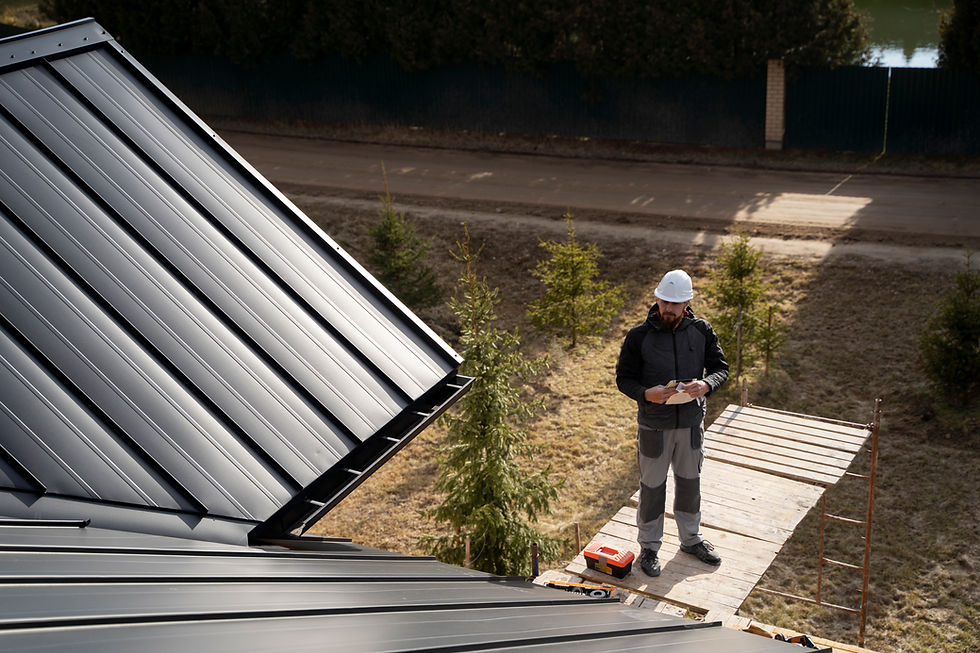What Are the Most Common Roofing Problems and How Do Services Address Them?
- John Shaw
- Mar 18
- 3 min read
A well-maintained roof is essential for protecting your home or business from the elements. However, over time, even the best roofs can develop issues that require professional attention. Whether you have Flat Roofing, Rubber Roofing, or traditional pitched roofs, recognising common roofing problems early can prevent costly damage. In this guide, we’ll explore the most frequent roofing issues and how a professional Roofing Service can effectively resolve them.
1. Leaks and Water Damage
One of the most common roofing problems is water infiltration. Over time, exposure to rain, snow, and ice can cause small cracks, leading to leaks. Flat Roofing is particularly vulnerable, as standing water can pool and penetrate weak spots.
How Roofing Services Address It:
Inspecting the roof for cracks, punctures, or weak spots.
Applying waterproof coatings or sealants to prevent further water damage.
Repairing or replacing damaged sections of Rubber Roofing to restore waterproof integrity.
2. Ponding Water on Flat Roofs
Flat roofs are susceptible to water pooling, especially if the drainage system is inadequate or clogged. Prolonged exposure to standing water can weaken the structure and increase the risk of leaks.
How Roofing Services Address It:
Clearing blocked drains and ensuring proper water runoff.
Applying slope correction to encourage water drainage.
Installing additional drainage systems to redirect water.
3. Damaged or Missing Flashing
Flashing is the metal or rubber material used to seal roof joints and prevent water seepage. Over time, flashing can deteriorate, leading to leaks around chimneys, vents, and skylights.
How Roofing Services Address It:
Replacing damaged or corroded flashing with high-quality materials.
Sealing gaps with weather-resistant adhesives.
Ensuring all joints and seams are properly secured to prevent future leaks.
4. Cracked or Blistering Roof Surface
Both traditional and Rubber Roofing materials can develop blisters or cracks due to prolonged sun exposure and weather fluctuations. These issues can compromise the roof’s integrity and lead to leaks.
How Roofing Services Address It:
Inspecting the surface for early signs of cracking or blistering.
Applying protective coatings to enhance UV resistance.
Replacing severely damaged sections with new roofing materials.
5. Poor Installation and Workmanship
If a roof is not installed correctly, it can develop problems sooner than expected. Poor workmanship can lead to loose materials, uneven surfaces, and inefficient drainage.
How Roofing Services Address It:
Conducting thorough inspections to identify poor installation areas.
Reapplying or securing loose materials for a proper fit.
Using high-quality materials and professional techniques to ensure longevity.
6. Roof Shrinkage
Rubber Roofing materials, such as EPDM, can shrink over time due to temperature fluctuations. This shrinkage can cause seams to pull apart, leading to leaks and structural issues.
How Roofing Services Address It:
Checking for shrinkage signs, such as pulled seams and exposed insulation.
Replacing or reinforcing affected areas with additional rubber roofing layers.
Using flexible adhesives and materials that accommodate temperature changes.

7. Blocked or Damaged Gutters
Gutters play a crucial role in directing water away from the roof. When clogged with debris, water can back up and seep into the roofing structure, leading to rot and mould.
How Roofing Services Address It:
Cleaning and clearing gutters to allow proper water flow.
Repairing or replacing damaged sections of the gutter system.
Installing gutter guards to reduce debris buildup.
8. Punctures and Tears in Roofing Membranes
Heavy foot traffic, falling branches, or severe weather can cause punctures in Flat Roofing or Rubber Roofing, leading to leaks and structural vulnerabilities.
How Roofing Services Address It:
Conducting regular inspections to identify punctures early.
Patching or replacing the damaged sections with compatible materials.
Reinforcing high-traffic areas with protective layers to prevent future damage.
9. Structural Sagging
Over time, roofs can begin to sag due to weakened support structures or prolonged exposure to moisture. This is a serious issue that requires immediate attention.
How Roofing Services Address It:
Identifying the cause of sagging, such as water damage or weakened framing.
Reinforcing or replacing compromised structural components.
Installing additional support beams or trusses to prevent further sagging.
10. Algae and Moss Growth
Algae, moss, and lichen growth can cause roofing materials to deteriorate, especially in damp or shaded areas. These organisms retain moisture, accelerating wear and tear.
How Roofing Services Address It:
Cleaning the roof with environmentally friendly treatments.
Applying anti-moss coatings to prevent regrowth.
Trimming overhanging branches to reduce shade and moisture buildup.
Conclusion
Roofing problems are inevitable over time, but with the right Roofing Service, they can be effectively managed and repaired before causing major issues. Whether you have Flat Roofing, Rubber Roofing, or traditional shingles, regular maintenance and prompt repairs can extend the life of your roof and protect your property from costly damage.



Comments